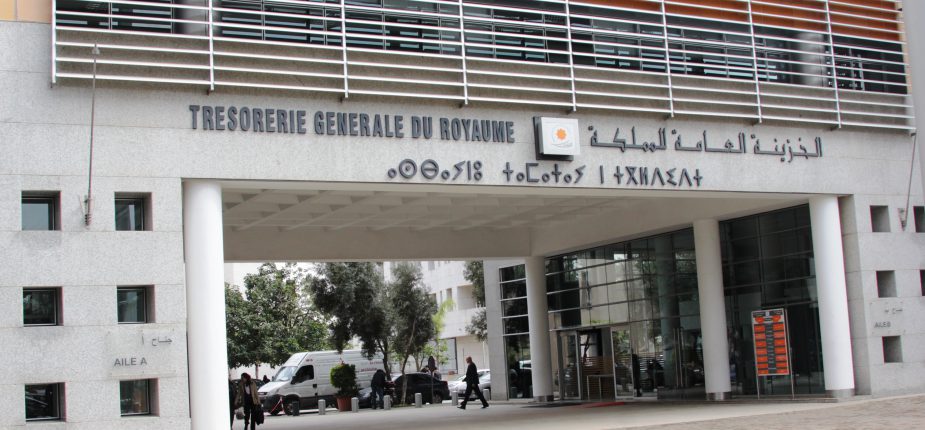
A press release has recently been issued by the Ministry of Economy and Finance regarding the Treasury’s debt and debt service payments as at end-November 2017.
It reads that, as at end-November 2017, the Treasury’s outstanding debt had reached MAD 685.2 billion, comprising MAD 532.7 billion of domestic debt and MAD 152.5 billion of external debt.
These figures reveal that external debt accounts for only 22% of the Treasury’s total debt, underlining that external financing has remained under tight control.
The extent to which public debt is under control is also reflected in the level of repayments in respect of the servicing of the debt or interest payments due.
The Treasury comfortably met its obligations during November which amounted to MAD 8.4 billion, with domestic debt accounting for MAD 7.9 billion and external debt MAD 437 million.
Principal accounted for MAD 7.3 billion of these repayments and interest MAD 1.07 billion.
The latter did not in fact correspond to November’s principal amount for the simple reason that interest accumulated on outstanding issues will only be repaid at maturity.
It would not therefore appear to be possible to assign the interest paid by the Treasury at the end of November 2017 to the principal amount so as to deduct from it the cost of the public debt repaid.
The cost of the debt is calculated by the Treasury on an annual basis as a ratio of the total interest paid over a year to the previous year’s stock of debt.
The most recently known average cost of Treasury debt, domestic and external combined, was that of 2016, which stood at 4.5%.
Furthermore, on a cumulative basis for calendar year 2017, the Treasury’s debt repayments (principal and interest) totalled MAD 125.5 billion as at end-November, with external debt accounting for only MAD 15.8 billion. This was largely due to the impact from Morocco’s sovereign credit rating and the IMF’s Precautionary and Liquidity line (PLL), which enabled the Treasury to reduce its cost of borrowing on international markets.
With the Treasury imposing a limit on its use of external debt, as a result, for the third year in succession, the net amount of capital raised on international markets was low.
The simple reason for this is that the Treasury is now the ‘captain of the ship’, the ‘principal conductor’ of the domestic capital market, in which it has become the No.1 player due to it being the main investor.
The Treasury can no longer be accused of exerting an undue influence on the market. Quite the contrary, in fact, as one can only wonder to what extent demand for capital would fall without its presence.
The Treasury has taken full advantage of the decline in interest rates and the fact that they have remained low for reasons that are well documented – weak economic activity, balance of payments deficit, etc. – so as to reduce the cost of its internal debt, knowing that the yield on 10-year Treasury bonds was 3.3% and those on the 2- and 5-year notes were below 3%.
Towards the end of the year, however, the government announced that it had contracted a USD 500 million loan from the Saudi Development Fund, thereby underlining the Treasury’s increased use of external funding.
The proceeds from this facility enabled the Treasury to reduce domestic debt by almost MAD 4 billion in November 2017.
And, the guidelines outlined in the 2018 Finance Bill regarding the Treasury’s debt position envisage the use of external financing to the tune of almost MAD 20 billion net next year.
This amount would represent a high over the past 10 years, higher in fact than in 2012 and 2013, during which a significant amount of external debt was raised, totalling about MAD 15 billion each year, due to heightened pressure on public finances and foreign exchange reserves.
As far as Morocco’s external debt is concerned, it is worth noting the following breakdown of the Treasury’s outstanding external debt, which totalled MAD 152.5 billion at end-November:
Multilateral creditors hold more than half (53.4%) of the Treasury’s external debt, which is mainly concentrated in the hands of three major institutions, the International Bank for Reconstruction and Development (IBRD), the African Development Bank (AfDB) and the European Investment Bank (EIB).
The international financial market holds 30.8% of the Treasury’s external debt and bilateral creditors the remaining 15.8%, 10% of which is held by European Union countries.
Regarding the terms granted by these various backers, it is worth noting that the development banks offer more flexible loan packages as well as more attractive financing terms (duration, grace period, foreign currencies, etc.).
Their pricing is based on a floating benchmark interest rate with a relatively small spread by comparison with financial markets.
Because, as far as the latter are concerned, 10-year Moroccan debt is trading at a 260-basis point spread in euros and at 180 basis points in USD in addition to issue premiums of 40 basis points and 20 basis points respectively, resulting in an estimated exit yield of 3.30% in euros and 4.30% in USD for 10-year bonds.
Furthermore, an upward trend in yields on these markets could see the Treasury facing a potentially higher exit yield in 2018.
It goes without saying, therefore, that the Treasury should resort to the development banks as the main source of its external financing. As a result, a sharp increase can therefore be expected in 2018!
Afifa Dassouli
Original article : https://lnt.ma/apres-profite-taux-bas-maroc-tresor-annonce-retour-a-linternational-2018/











